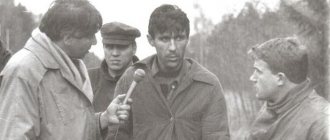The death penalty is the most severe punishment in criminal law. It is the violent killing of a criminal in order to prevent the commission of similar crimes in the future.
Today, the death penalty is not used in Russia, however, this type of punishment is preserved in the country’s Criminal Code and can be brought back into effect.
Why the death penalty is not used in Russia
Capital punishment has not been applied in our country since May 1999. In 1997, Russia joined the Council of Europe and signed Protocol No. 6 of the Convention for the Protection of Human Rights, which envisaged the introduction of a moratorium on the death penalty at least until jury trials began to function in all subjects of the federation.
Despite the fact that since 2010 the institution of juries has been operating in all corners of our country, the moratorium on the death penalty has not been lifted. This decision was made by the Constitutional Court.
The moratorium presupposes the actual absence of the application of such a penalty as the death penalty. That is, no court can impose the death penalty on a person, no matter how serious the crime he has committed. The duration of the moratorium has not been determined.
Moratorium
On February 2, 1999, the Constitutional Court of the Russian Federation adopted a resolution in which it recognized the unconstitutionality of the possibility of imposing a death sentence without the participation of a jury in the trial. This ban was temporary and only technical in nature. The issue of direct imposition of punishment and its application could not be considered resolved, since execution remained enshrined in the Criminal Code, in Art. 44 and 59. The procedure for its implementation is established in Chapter. 23 Section VII of the Penal Code. At the same time, the issue of rejecting the Federal Law on the ratification of Protocol No. 6 or its adoption was not considered by the legislative bodies for more than 10 years.
Features of the use of the death penalty
Despite the prohibition of imposing this penalty, the Criminal Code of the Russian Federation has a list of articles that include the death penalty in their sanction. This means that previously capital punishment was imposed for such actions. If the moratorium is lifted, the courts will again be able to impose such punishment for the following crimes:
- Murder with aggravating circumstances, for example, when there was more than one death or the method of committing the crime caused danger to an indefinite number of persons (Part 2 of Article 205 of the Criminal Code).
- Murder of a public servant or social activist in order to stop his active work (Article 277).
- Attempted murder of an investigator or judge (Article 295).
- Causing harm to an investigator or law enforcement officer in retaliation for his professional activities or to prevent him from performing his official duties (Article 317).
- Activities aimed at the destruction of any racial, national, religious or ethnic community (Article 357).
According to the Criminal Code, the death penalty in the Russian Federation cannot be imposed:
- A minor (age is assessed at the time the crime was committed, even if the offender turned 18 at the time of the trial, he will not face capital punishment).
- To a woman.
- An elderly person (over 65 years old, in this case age is considered at the time of sentencing).
Note!
Even if a sentence of life imprisonment is imposed, the defendant has the right to appeal the sentence. For more information about the timing of consideration of appeals, read this article https://lexconsult.online/8133-srok-podachi-rassmotreniya-apellyatsii-na-reshenie-suda Depending on the method of carrying out the sentence, the following types of death penalty are distinguished:
- execution;
- administering an injection;
- hanging;
- electric chair;
- decapitation;
- stoning;
- gas chamber.
Survey
It is held once every six months. The convicted person is also examined by a commission of doctors (psychiatrists). If there are no grounds for terminating compulsory treatment, a conclusion on its extension is submitted to the court. For the first time, the decision to continue staying in hospital is made at the end of six months from the start, and subsequent times – annually. If, during the application of compulsory treatment, significant changes in the health status of the perpetrator are revealed, which provide grounds for canceling or adjusting this measure, the examination is carried out regardless of the expiration of any period.
Which countries use the death penalty?
Despite the fact that global practice is moving towards abandoning such a radical measure of punishment, today there are 58 countries in which the state can kill criminals.
Among them are such developed powers as Japan, China, the UAE, Singapore and the United States of America. Most states that allow capital punishment are in Africa and Asia. Almost all European countries do not impose the death penalty. Among our closest neighbors, the death penalty is still used in the Republic of Belarus.
Life of special regime
In Russia there are eight colonies for those sentenced to life imprisonment, where those sentenced to an exceptional measure of punishment - the death penalty - are also kept. Two of them are located in Mordovia: this is a special site in correctional colony No. 1 (IK-1, “Edinichka”) in the village of Sosnovka and IK No. 6 in the village of Torbeevo (“Torbeevsky Central”). The first holds 165 prisoners, killing 603 people. In the second - 134 convicts, who were responsible for 658 murders.
Convicts are kept in cells mostly in groups of two, and their partners are selected by psychologists so that there are no conflicts. After conviction, all those sentenced, without exception, turn to faith and read mainly religious and legal literature. Almost all of them are employed and work in clothing production.
But if prisoners in other colonies, even high-security ones, go to workshops, then for life-sentence prisoners there are special “labor” cells in the same buildings. And it turns out that for the entire period they see only a few people: their bunk neighbor, the guards, some correctional officers (medics, psychologists), as well as members of public monitoring commissions (POC) and psychological scientists who come to them for interviews.
A section for life-sentenced prisoners in the Mordovian “Edinichka”
Photo: Maria Frolova
The daily routine is almost ideal: getting up at six in the morning, toilet, exercises, a working day with a lunch break, then free time, including a walk in a special outdoor box, closed on four sides by blank walls, from where you can only see the sky and roofs No.
Prisoners undergo regular medical examinations. Their nutrition, by the way, was developed by the best nutritionists in the country and carefully verified - and dozens of inspectors monitor compliance with the standards. As a result, all convicts are physically well developed and every single one of them looks much younger than their age.
The attitude towards them is strictly formal: addressing them by first name and patronymic and “You”, scrupulously observing any rights, providing paper for complaints and letters upon request. True, they are under surveillance by video cameras 24 hours a day.
Employees treat each convicted person not as a criminal, but as a person. There is such a psychological barrier here: the employee is simply obliged to fulfill his duties, his safety functions, and first of all himself. And there is no opportunity to be distracted by the attitude towards the convicted person.
Sergey SimakovColonel of internal service, head of IK-6 ("Torbeevsky
Contrary to popular belief, life-sentence prisoners are no longer driven in the “swallow” pose: human rights activists considered that this demeans the dignity of those sentenced, and now all those sentenced to life imprisonment walk “like everyone else.” The only external difference from other convicts is a circle on the chest with the letters “PZ”. Nothing else.
But this is external.
Many of the convicted were abandoned by their families; their wives filed for divorce even before the verdict. All relatives stopped communicating with someone. People experience a huge lack of communication - it’s good if they have someone to correspond with, but this can only be done with employees, psychologists and cellmates with whom they have been sitting for years.
Tatyana AlyakshinaHead of psychological service of the Federal Penitentiary Service of Russia for the Republic of Mordovia
According to psychologists, the religiosity of those sentenced to life is mostly ostentatious. As Lieutenant Colonel Alyakshina explains, only ten percent of all prisoners sincerely turned to faith. The rest, although they interpret the Bible, the Koran or the Torah for hours and can recite volumes of sacred scriptures by heart, but all this is for show. There is hope in the convicts, and they understand that only good characteristics give a chance.
That's why they talk about religion - hoping to make the FSIN employees believe it, who will sign their characteristics for the parole court. And, besides, many enter into correspondence with priests - after all, the rest have turned away from them.
The head of IK-6, Sergei Simakov, notes that many convicts declare their desire to go to a monastery if released - but this is rather complacency. People have spent 25-30 years in strictly limited conditions of a colony; they have absolutely no idea how the world has changed, and many do not even imagine the full depth of the changes.
Lifers have radios in their cells, and they listen to the radio, especially music and news. Some even have televisions that you can watch in your free time. Anyone has the right (and many people use this right) to subscribe to newspapers and magazines.
Of course, sometimes conflicts arise between neighbors, mainly due to divergent views on events taking place in the country. Prisoners are kept up to date with all the latest news. Sometimes they quarrel on domestic grounds or over parcels - when one was sent something, but the other was not, and he does not want to share. But there are no serious conflicts - primarily because the convicts themselves understand: it is impossible to live in conditions of conflict. And so they restrain themselves.
Tatyana AlyakshinaHead of psychological service of the Federal Penitentiary Service of Russia for the Republic of Mordovia
According to Alyakshina, among those sentenced to extreme punishment, a maximum of 10-15 percent are mentally intact. The reason is clear - these people waited for years to be shot, and then resigned themselves to the indefiniteness of their punishment. During this time, everyone experienced global internal changes: at first, almost all “lifers” behaved aggressively towards others, many noted suicidal tendencies, but after two or three years the majority resigned themselves and calmed down.
Monitoring unit for convicts at Torbeevsky Central
Photo: Maria Frolova
Some eventually slipped into organics - they began to live only by instincts and physiological needs. In order to maintain your sanity in life imprisonment, you must be a strong personality with good heredity. And this is rare: many grew up in dysfunctional families, were subjected to violence, or violence happened before their eyes. Some were even born in prison.
Violations
With the publication of “Execution Order” in 1924, it became clearer what violations could have occurred during the execution of the sentence. Thus, the document prohibited publicity of the execution. No painful methods of killing were allowed; there was a ban on removing parts of clothing and shoes from the body. It was forbidden to give the body to anyone. The burial took place in the absence of rituals and signs of a grave. There were special cemeteries where the condemned were buried under tablets with numbers.
The political officer of the Kamchatka pre-trial detention center says:
0
See all photos in the gallery
Firstly, such a sacrament was performed only in those prison casemates that were designated by the Ministry of Internal Affairs for each Russian region. When a death row prisoner held by us was denied pardon, an encrypted message came from Moscow with this news and an instruction: in order to execute the sentence against the convicted person, we must immediately transport him by special escort to the Khabarovsk pre-trial detention center to carry out the sentence. I was always amazed at how quickly my colleagues there sent a person whom I had literally just handed over to the convoy to another world - it turned out that he was put against the wall in the very first hours after meeting him. As they say, hello and goodbye.
And another thing: the rules for keeping death row prisoners, their preparation for execution and its ritual itself were declared top secret order of the USSR Ministry of Internal Affairs No. 002 - my then boss kept it in a personal safe and only waved the cover in front of my nose once. No matter how many secrets we have learned from the special services over the past decade, the execution topic still remains tightly closed to society; those conversations with executors that claim to be sensational, which often appear in the newspapers, are nothing more than the fantasies of my colleagues in the pen.
×
0
As soon as the court announces a death sentence to the criminal, immediately after returning to the pre-trial detention center, he is dressed in a striped robe with a striped cap and placed in a special cell. The barred window in it is covered with such a thick visor that one can only guess about the heavens on the other side. The door is locked with a combination lock, which cannot be opened without the knowledge of the assistant director of the pre-trial detention center on duty. Those sentenced to death while away their days either alone or with a partner. Every day begins with handcuffing and a general search - walls and bars are tapped, bedding and clothes are probed centimeter by centimeter. No walks, no dates, no conversations on the phone, which are occasionally allowed to others. Exit to the bathhouse or to the medical unit - only one by one, only in handcuffs and with heavy security, only through deserted corridors. In the first months after the verdict, death row inmates live in hope - after all, the cassation appeal to the Supreme Court has gone, what if the verdict is either canceled, or the case is sent for further investigation, or the “tower” is replaced with life? This wait can last six months, or even more, all this time the person does not leave hope for a better outcome. From time to time, the only person on the outside with whom it is allowed to communicate appears - his lawyer, who will console him and share news.
0
But now the decision of the Supreme Court has been received, the verdict has been confirmed, but the death row man is still holding on - it’s not evening yet! You can also compose and send a pitiful petition to the president and expect mercy from him. They wait a year, a year and a half - I still remember the double murderer Marat Konkin, who was tortured in anticipation of execution for four years and was still allowed to live. It was no longer a person—a lying corpse. Gray hair on his balding head, shaking hands, dystrophic thinness - he was then twenty-four years old. And one more trick that perhaps few people know about. Death row inmates learn the result of considering a petition for clemency only if it is granted and the person is given life. If I opened a secret package with a refusal delivered by the field communications service, on the same day and hour we received an order: to send the condemned person to Khabarovsk on the next plane flight. What this meant was known not only to us officers, but also to those passengers who were being taken to slaughter.
0
An old truth: everything that they try to hide is shrouded in more than just secrecy - lies. The suicide bombers begged to meet with their wife, mother or child - we lied to them that they either had a cold, or a blizzard blocked all the roads, or the post office and telephone were working very poorly. If only he would believe us, if only he wouldn’t freak out and get on our nerves by opening veins or making a noose. Once they read to us a menacing order from the minister, by which the shoulder straps of the leaders of one of the “execution” pre-trial detention centers were torn off: one of their suicide bombers did commit suicide. Between the lines one could easily recognize not only the minister’s anger, but also simply a personal insult to him: the bandit should have been shot by the will of the court and the president, but he, the impudent one, arbitrarily took his own life and escaped from legal punishment. Seeing off those condemned to execution, in which I took part in my accursed position, now seems to me like a solid theatrical performance, in which both the main characters and the extras played their roles naturally. Imagine - absolutely all the suicide bombers believed us.
0
So, a special convoy arrived - four hefty guys with machine guns, walkie-talkies and a dog. Today they will take Kostya Ivantsov, 26 years old, on his last journey, always known as an excellent worker at the shipyard and an exemplary family man. And here you are: I went fishing with my friends, they started poaching, and then a fisheries inspector showed up. Kostya was drunk to the point of amazement at the time, and therefore he ended the squabble with the unexpected guest as easily as possible: he hit him with a doublet from a gun... I talked with Kostya more often than with others, no matter how hard I tried to pass unnoticed near his cell - he heard and recognized my steps. I noticed this amazing ability in every suicide bomber: God knows how, but they unmistakably guessed who was passing along the corridor - the owner, godfather or lepila (doctor). I will not hide that talking with the doomed was a mortal torment for me, especially in the evenings, when I felt that my reserve of compassion had already been spent, that I could no longer listen, or smile, or speak. And then watch your face, gait, movements, speech and think about what smile to squeeze out of yourself when the same Kostya asked the same thing: “Boss, will they kill me soon?”
0
But that's it now. Now I come to Ivantsov exactly after dinner and play my role diligently: they say, his pardon will not be considered until another examination is carried out, this time in Khabarovsk. So, grab your things and head out. You'll take a ride, they say, at our expense on a good plane, rest for two or three weeks in a hospital bed and come back. And at that very second I see in front of me a robot, a mannequin: the face is white, motionless, the movements are slow but precise. He puts his simple belongings into a bundle, but cannot tie the ribbons: his hands do not obey. Not a single question, not a single request - guessed it? The sergeants and the duty officer who are waiting for us in the corridor, the convoy, to whom after eighty-five steps (counted!) they will hand over Ivantsov - sheer cordiality, sheer courtesy. Walk, Kostya, through the bars, through the heavy doors, get into a paddy wagon specially provided for you, fly on a plane with nice flight attendants and cheerful passengers - this is your last journey, at the end of which - a bullet in the back of the head. Neither farewell to relatives, nor confession with communion, nor the last letter - the acting in which we participate does not provide for such excesses.
Secrets
The technologies of this process were hidden with special care from the citizens of the country. During the civil war, advertisements only talked about counter-revolutionaries to intimidate. Relatives were never allowed to receive documents about the execution. The death penalty in the early USSR was announced only verbally.
According to documents from 1927, executions for banditry were not announced at all. Even after writing appeals, the relatives could not obtain any information about these people.
Handwriting
The last time a death sentence was carried out in Russia was a few weeks before the abolition of the death penalty on the territory of the state.
During the “lull”, Fischer purchased a car and received a place for a garage on the territory of the Moscow stud farm, where he worked as a livestock specialist. Beneath it he set up a place of torture for his future victims.
This is how the criminal’s style changed, he lured people into his garage under various pretexts or picked up teenagers voting on the road. After the torture, Golovkin took the bodies to the “burial grounds.”
Historical facts
In Russia, the death sentence was regularly overturned or reinstated. Such decisions were made by different rulers, and changes usually occurred when there was a change in power or political system. Often, Russian legislators were guided by trends in criminal law in the international arena.
Any changes in legislation were formalized by the corresponding regulatory act. Even the rules and methods of death sentences differed at different times. The main historical points include:
- Ancient Russia . The death penalty was a method of blood feud. In the 11th century it was enshrined at the legislative level. This punishment was used for robbers. Although a ban on execution was later adopted, it was still carried out. According to the Dvina Charter, such a punishment was applied even if theft was committed three times in a row. Later, treason or slander, as well as crimes against religion or the state, were added.
- The period of the reign of Ivan the Terrible. In 1550, the Tsar adopted a special Code of Law containing information on the rules for imposing the death penalty. This type of punishment has become the most common. People were executed in public, and a variety of tortures were also used. After 100 years, qualification of punishment appeared, so execution became qualified or simple. In the first case, the criminals' heads were cut off, and burning or quartering were also used. In simple executions, hanging was used. Historians claim that Ivan the Terrible preferred to impale those convicted. If the death sentence was imposed on a pregnant woman, it was carried out only after childbirth.
- Reign of Peter 1 . During this period, a huge number of executions were recorded. Such punishment was applied for 123 violations of the law, but in fact this harsh measure was resorted to quite rarely. Execution was used when there was evidence of treason, rebellion or murder. In other situations, hard labor, corporal punishment or branding were prescribed.
- The period of Elizabeth's reign until the revolution of 1905 . The daughter of Peter 1 decided to cancel the death sentence. Instead, political execution was introduced, represented by hard labor. Catherine the Great decided not to introduce changes, although members of Pugachev's community were quartered. Under subsequent rulers, hanging and shooting were used, the first method being used for civilians, and execution for the military. During the entire 19th century, no more than 45 people were executed, but after the revolution this punishment began to be used much more often.
- THE USSR. With the introduction of the Provisional Government in 1917, the death penalty was abolished. But after about 6 months, this restriction ceased to apply, so unwanted persons were simply shot. Such actions made it possible to effectively deal with citizens who were dissatisfied with the established regime. Since 1918, execution without trial has been permitted if the accused is presented as a spy, counter-revolutionary or hooligan. The situation became particularly acute in 1930, as many Russians were executed. Therefore, by the end of the year this penalty was canceled.
Reference! Historians claim that the last person executed in Russia in 1996 was the maniac Golovkin.
Memoirs of performers
According to the recollections of the members of the firing squad, Soviet methods of execution were still cruel. Especially unprocessed ones at first. Cases of requests from them to the Ministry of Internal Affairs regarding this matter have been documented. The execution took place at night, after 12 o'clock. In fact, the performers had practically no substitutes, although by law they had to change to distract the performer from the horror he experienced. Thus, one of the members of the firing squad testified already in our time that, having killed 35 convicts in 3 years, he was never replaced by anyone.
Although the condemned were not told where they were being taken, they usually understood what was happening. Even those full of inner strength in the face of death cried out farewell words and chanted slogans. There were those who sat gray in an instant. One of the most terrible memories of a participant in an execution is how a person, having realized where he was led, refuses to cross the threshold of the last room in his life. Someone tearfully begged not to kill, breaking free and clinging to the threshold. That is why people were not told where they were being taken.
Usually it was a closed office with a small window. Someone who had no will and character fell immediately upon entering the room. There were cases of death from heart failure minutes before the actual execution. Someone resisted - they were knocked down and twisted. They shot point-blank in the back of the head, slightly to the left, in order to hit a vital organ, and the convict died immediately. Understanding where he was led, the condemned man could make one last request. But, of course, there was never any fulfillment of unrealistic wishes like a feast. The maximum was a cigarette.
While waiting for execution, condemned prisoners could not communicate with the outside world in any way, they were forbidden to be taken out for walks, and were only allowed to use the toilet once a day.
The regulations for the perpetrators included a clause according to which after each execution they were entitled to 250 grams of alcohol. They were also entitled to a salary increase, which was significant at that time.
Usually the performers were paid about two hundred rubles a month. During the entire existence of the Soviet state since 1960, not a single executioner resigned by his own decision. There were no cases of suicide among their ranks. The selection for this role was carried out carefully.
Eyewitnesses have preserved memories of the tricks used by the executioners to soften the blow to the condemned. Thus, he was informed that he was being led to write a request for pardon. This had to be done in another room with deputies. Then the condemned man walked briskly into the room, and upon entering, he found only the performer. He immediately shot in the left ear area according to the instructions. After the condemned man fell, a control second shot was fired.
No more than a few people included in the management knew about the occupation of the performers themselves. On trips to carry out “secret missions,” officers took on other people’s names. When traveling to other cities for execution, they immediately went back after the sentence was implemented. Before the “execution” began, each performer was required to familiarize himself with the case of the convicted person, then read the guilty verdict. This procedure was envisaged in order to eliminate any pangs of conscience among officers. Each member of the firing squad realized that he was ridding society of the most dangerous people, and by leaving them alive, he would have given them a free hand for further atrocities.
Participants in executions in the USSR often became drunkards. There were cases of them ending up in psychiatric hospitals. Sometimes the sentences accumulated, and dozens of people had to be shot.





